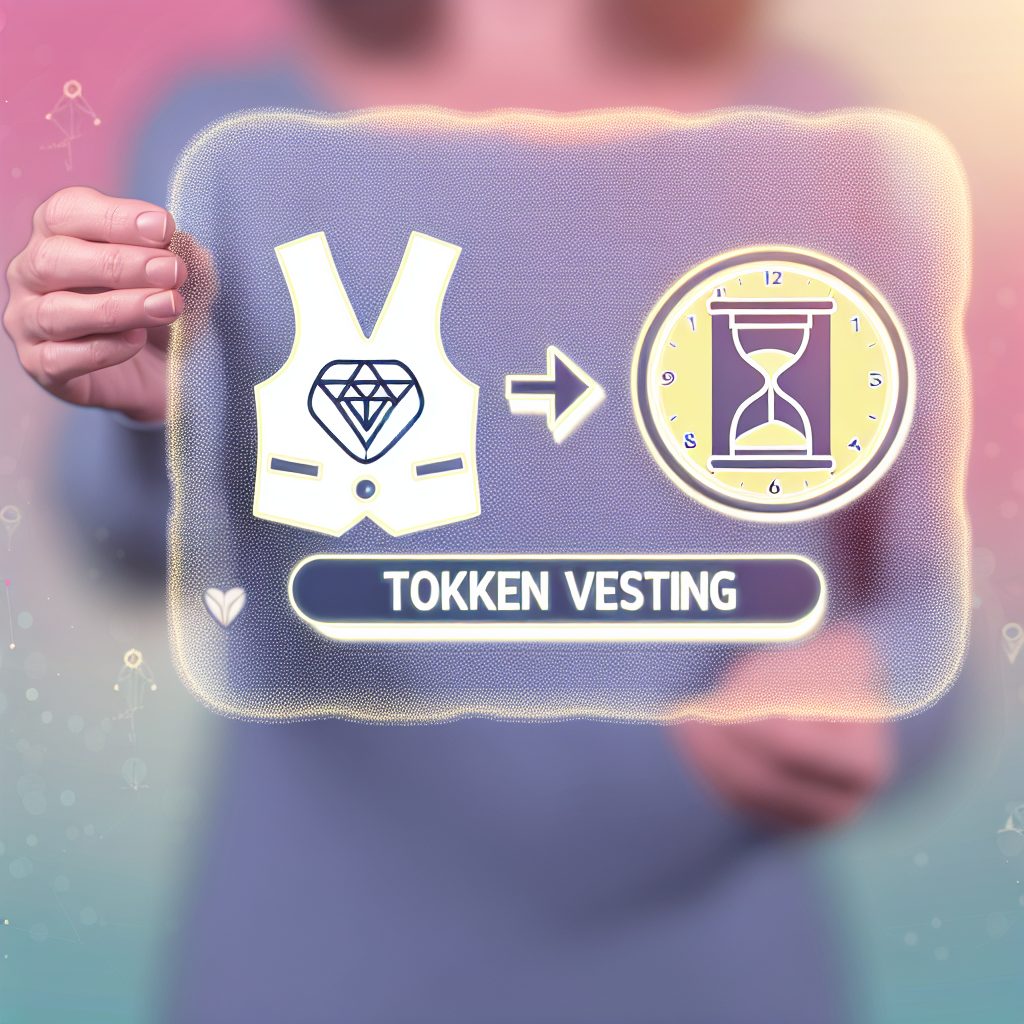The Basics of Token Vesting in the Cryptocurrency Industry
Token vesting is a crucial concept in the cryptocurrency and blockchain space, playing a significant role in the management of token distribution and ensuring the long-term success of projects. Understanding token vesting is essential for investors, developers, and anyone interested in the crypto ecosystem. This article delves into the fundamentals of token vesting, its importance, mechanisms, and real-world applications.
What is Token Vesting?
Token vesting refers to the process of gradually releasing tokens to stakeholders over a predetermined period. This mechanism is designed to prevent immediate selling of tokens, which can lead to market volatility and undermine the project’s stability. By implementing a vesting schedule, projects can align the interests of their team, investors, and the community, fostering a more sustainable growth trajectory.
Why is Token Vesting Important?
Token vesting serves several critical purposes in the cryptocurrency industry:
- Market Stability: By controlling the release of tokens, projects can mitigate sudden price drops caused by large sell-offs.
- Incentivizing Long-Term Commitment: Vesting encourages stakeholders to remain engaged with the project over time, aligning their interests with the project’s success.
- Building Trust: A well-structured vesting schedule can enhance transparency and trust among investors, as it demonstrates a commitment to the project’s long-term vision.
- Regulatory Compliance: In some jurisdictions, token vesting can help projects comply with regulations regarding securities and token sales.
How Token Vesting Works
Token vesting typically involves a vesting schedule that outlines how and when tokens will be released. The key components of a vesting schedule include:
- Vesting Period: The total duration over which tokens will be released, often ranging from several months to several years.
- Cliff Period: An initial period during which no tokens are released. This is often used to ensure that stakeholders are committed before receiving any tokens.
- Release Schedule: The frequency and amount of tokens released after the cliff period. This can be linear (equal amounts released at regular intervals) or variable (different amounts released at different times).
Types of Token Vesting
There are several types of token vesting structures that projects can implement, each with its unique characteristics:
1. Time-Based Vesting
In time-based vesting, tokens are released according to a fixed schedule. For example, a project may have a four-year vesting period with a one-year cliff, releasing 25% of the tokens at the end of each year.

2. Milestone-Based Vesting
Milestone-based vesting ties token releases to specific project achievements or milestones. This approach ensures that stakeholders are rewarded for meeting predefined goals, aligning their incentives with the project’s success.
3. Hybrid Vesting
Hybrid vesting combines elements of both time-based and milestone-based vesting. This structure allows for a more flexible approach, accommodating both time commitments and performance metrics.
Real-World Applications of Token Vesting
Token vesting has been successfully implemented in various cryptocurrency projects, demonstrating its effectiveness in promoting stability and trust. Here are a few notable examples:
1. Ethereum
Ethereum’s initial token sale in 2014 included a vesting schedule for its founders and early investors. This approach helped ensure that the team remained committed to the project’s long-term success while preventing immediate sell-offs that could destabilize the market.
2. Chainlink
Chainlink implemented a vesting schedule for its team and advisors, with a four-year vesting period and a one-year cliff. This structure has contributed to the project’s growth and stability, as stakeholders are incentivized to support the ecosystem over time.
3. Polkadot
Polkadot’s tokenomics includes a vesting schedule for its founders and early investors, ensuring that they remain aligned with the project’s vision. This strategy has helped build trust within the community and fostered long-term commitment to the platform’s development.
Statistics on Token Vesting
Recent studies and surveys have highlighted the growing importance of token vesting in the cryptocurrency industry:
- According to a report by CoinDesk, over 70% of successful ICOs implemented some form of token vesting.
- A survey conducted by Blockchain.com found that projects with a clear vesting schedule experienced 30% less price volatility compared to those without.
- Research from Statista indicates that projects with longer vesting periods tend to have higher long-term price appreciation.
Challenges and Considerations
While token vesting offers numerous benefits, it also presents challenges that projects must navigate:
- Complexity: Designing a vesting schedule that balances stakeholder interests can be complex and requires careful planning.
- Market Perception: If not communicated effectively, vesting schedules can lead to negative perceptions among investors, especially if they feel that the team is not fully committed.
- Regulatory Risks: Depending on the jurisdiction, token vesting may raise regulatory concerns, particularly regarding securities laws.
FAQs about Token Vesting
What is the purpose of token vesting?
The primary purpose of token vesting is to ensure market stability, incentivize long-term commitment from stakeholders, and build trust within the community.
How does a vesting schedule work?
A vesting schedule outlines how and when tokens will be released to stakeholders, typically involving a vesting period, cliff period, and release schedule.
What are the different types of token vesting?
The main types of token vesting include time-based vesting, milestone-based vesting, and hybrid vesting, each with its unique characteristics.
Can token vesting help with regulatory compliance?
Yes, in some jurisdictions, implementing a token vesting schedule can help projects comply with regulations regarding securities and token sales.
Are there any risks associated with token vesting?
Yes, challenges include complexity in designing a vesting schedule, potential negative market perceptions, and regulatory risks depending on the jurisdiction.
Conclusion
Token vesting is a fundamental aspect of the cryptocurrency industry, providing a framework for managing token distribution and ensuring the long-term success of projects. By understanding the mechanics of token vesting, stakeholders can make informed decisions and contribute to a more stable and sustainable crypto ecosystem. As the industry continues to evolve, staying updated on best practices and emerging trends in token vesting will be essential for anyone involved in the space.
For more insights and updates on cryptocurrency news and price tracking, visit Bitrabo. Follow me on social media for the latest updates: X, Instagram, Threads.
Disclaimer: This article is for informational purposes only and should not be considered financial advice. Always conduct your own research before making investment decisions.
The Crypto Watchlist of the Week 🔎
Subscribe to receive expert-curated projects with real potential—plus trends, risks, and insights that matter. Get handpicked crypto projects, deep analysis & market updates delivered to you.


